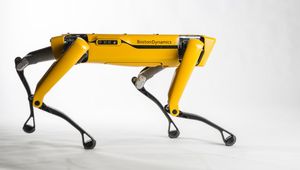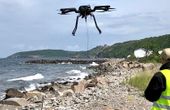Open-Source 3D Printed Quadcopter
A lightweight and fully hackable quadcopter offering better flight control, lesser noise, and lots of integrations.
Technical Specifications
| 3D Printable Material | Carbon fiber, ABS/PLA plastic |
| Flight Controller | KK 2.1.5 FC |
| Motors | 1200KV shaftless Outrunner motors |
| Electronic Speed Controller | Q-Brain ESC x 4 with UBEC |
| Radio Transmitter | Upgradable Turnigy 9X transmitter with solderless programmer |
| Props | 8045 props x 4 (2 spinning right, 2 spinning left) |
| Battery | 3 cell LiPo (LiPoly or lithium polymer) battery |
| Vibration Isolators | 3D printable DragonSkin silicone |
| 3d Printed Parts | Battery hanger, flight controller holder, frame, bracket, isolator mold, vibration isolator molds, landing gear, wire clips, and motor mount |
Overview
The Open-Source Design Isolates Vibration
The 3D-printed quadcopter project offers .stl files, which can be downloaded and printed by anyone. For example, users can go for a lightweight design by opting for carbon fiber tubings for the quadcopter’s arms.
Vibration Isolation
This quadcopter model features carbon fiber tubes without breaking them in the middle, adding more rigidity to the model. With this technique, the load of the central unit is borne by the tubes. The carbon fiber doesn’t come in contact with the plastic, ensuring maximum vibration isolation.
The same principle is followed to create the plastic flight controller mount, as the contact between surfaces has been avoided by using O-rings.
There are rubber slots in the FC mounting platform to avoid contact between the FC circuit board and other materials, especially metal. This ensures optimal signal transmission, smooth operations, and noise reduction during flights.
Flight Controller Holder
The flight controller (FC) holder is key to ensuring maximum vibration isolation. The holder has a circular space with rubber insert tubings and three vibration insulator mounts.
The flight controller assembly, along with the rubber cushioning, is supported by three molded silicone isolators that keep it afloat on the flight controller mount. This setting enables the flight controller mount to absorb maximum vibration and noise before they reach the FC circuit, hence creating a more stable and controlled operation.
Electronic Components of the 3D-Printed Quadcopter
Since it is an open-source design, users can create models of spending on the electronics they plan to use. However, to ensure maximum vibration isolation and more efficiency, users can install components as suggested by the makers.
Among flight controllers, KK 2.1.5 is more powerful and can support tricopters, quadcopters, and even octocopters. The flight control unit is open-sourced and can be 3-D printed. Users can also choose a Pixhawk flight controller with a modified FC holder.
The 1200KW outrunner shaftless motors need a prop kit with four 8045 props. Not only does the central shaft but also the outside case of the motors spin with the props, hence the name. Given the configuration, these shaftless motors are more efficient than conventional builds, saving battery life.
The motors are powered by four electronic speed controllers (ESC) and a battery elimination circuit (UBEC). The use of Q-Brain ESC saves extra wiring and keeps the weight at the center of the quadcopter.
Users have a lot of options in terms of radio transmitters. The Turnigy 9X transmitter is not only affordable, but it also features a board to reprogram the transmitter. This is an upgradable transmitter and can be enhanced to receive telemetry. The 3-cell LiPo battery offers a better power-weight ratio and efficiently supports Q-Brain ECS.










